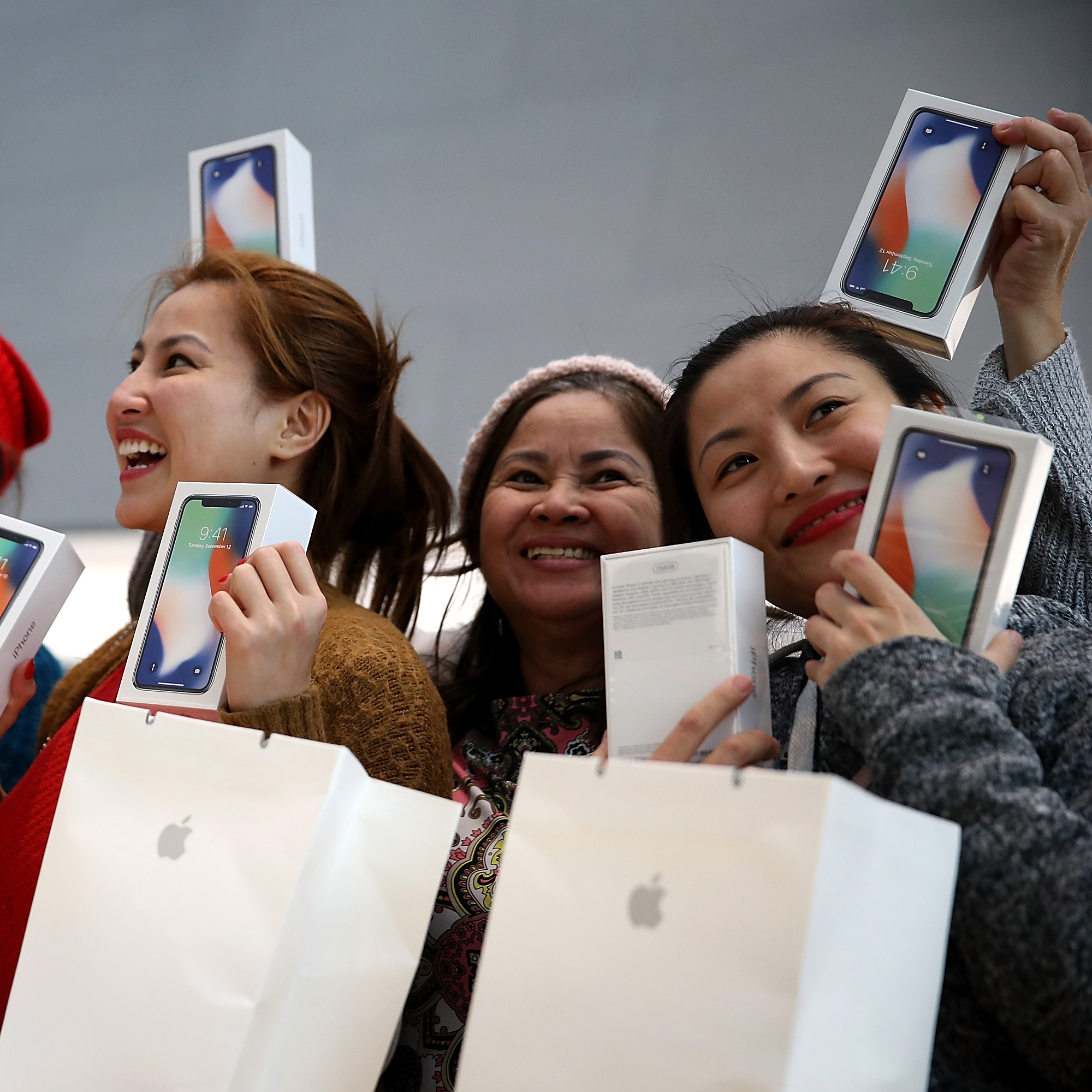Technology
Apple as a Service, Part 1: Entering a Period of Greater iPhone Visibility

Published:
Last Updated:

By Gene Munster of Loup Ventures
New AAPL paradigm; Apple as a Service. As Apple’s market cap approaches $1T, it begs the question; can shares move higher? We believe the Apple story is well positioned for future appreciation based on a longer-term, more sustainable investing paradigm. The recent move higher in shares of AAPL is likely an early reflection of this emerging paradigm shift. This is part 1 of a 4-part series outlining the four key themes related to this new paradigm.
Install base. The massive iPhone base is ample opportunity for stable future sales. We think there are ~800M iPhones in use today, but have seen numbers as low as 700M. Either number, 700 or 800M, is a large base relative to the approximately, 220M iPhones the Street is expecting Apple to sell in both CY18 and CY19. We believe, assuming a continued loyalty among iPhone users, this active iPhone base gives ample opportunity for the company to sell a steady 220M units per year. This ignores the opportunity of market share growth, which is currently at about 16% of the smartphone market (source: Loup Ventures, IDC).
As for market share gains, we think iPhone is less likely to win measurable share of the flip phone market. On the most recent earnings call, Tim Cook was optimistic about the potential to add new iPhone users based on his belief that there are 500M feature phone users that will eventually convert to smartphones. We’re less optimistic regarding the iPhones ability to capture market share in the remaining feature phone market, given that segment likely cannot afford even the lowest price iPhone ($349). Those customers may convert to previously-owned iPhones that likely won’t have a positive impact on the iPhone trajectory.
Stable replacement cycle. The reoccurring negative in the Apple story is an elongated iPhone replacement cycle. The logic is that people have been holding on to their phones longer because the annual incremental features are less compelling. Small changes to the length of time people hold onto their phones can have a measurable impact on iPhone demand. If, for example, the entire iPhone base holds onto their phones for an additional 3 months in a given quarter, that would effectively reduce the iPhones sold in that quarter by 18M units or 8%. This could obviously turn a stable business into one that is declining at near double digits.
The key question is; in the future, will consumers hold onto their iPhones longer than they do today? This lengthening iPhone replacement cycle perspective has credibility because the cycle has lengthened in the past. Take, for example, in 2015, during the iPhone 6 cycle, we estimate the average upgrade duration was about 2.4 years. We believe during FY16 that duration increased to 2.8 years, in part causing iPhone units to decline 8% y/y. Apple has essentially confirmed this trend with high level math that the iPhone base has effectively grown by 15% while at the same time, annual iPhone units have been flat. The company also refers to the iPhone’s reliability as a competitive advantage (aka it lasts longer).
Separately, on the Dec-17 earnings call, Tim Cook responded to an upgrade duration question with a comment suggesting that in markets like the US, “I think it’s accurate to say… the replacement cycle is likely longer.” But the key question is; will consumers hold onto their phones longer in the future? We don’t definitively know, but what we do know is the iPhone busies has, over the last 6 quarters, has reported stable results for the first time in its history. The product went through a period of hyper growth (80%+), modest growth (15%), back to hyper growth (35%+), and finally into decline after the iPhone 6 (-8%). During the iPhone 7 cycle and into the beginning of the iPhone 8/X cycle (the past 6 quarters), the iPhone business has stabilized. Average unit growth during that period was 2% with a range of -1% to 5%. We believe this stability could only happen with a consistent replacement cycle. We also know that the smartphone is the most important technology a consumer owns and even absent of compelling new features, upgrading is a necessity based on degradation of battery life, screens, and processing power.
Retention rates trend above 90%. We have, over the years, periodically measured intent to buy from existing iPhone owners, and have consistently found greater than 90%+ of existing iPhone owners intending to stick with the iPhone. This is a powerful testimony to Apple’s brand loyalty, given it has become increasingly difficult to distinguish features between iPhone and Android, along with Apples premium average selling price ($728 from $655 a year ago). For years there have been prediction that feature-rich competitors would decrease iPhone loyalty, and that simply has never played out.
Disclaimer: We actively write about the themes in which we invest: virtual reality, augmented reality, artificial intelligence, and robotics. From time to time, we will write about companies that are in our portfolio. Content on this site including opinions on specific themes in technology, market estimates, and estimates and commentary regarding publicly traded or private companies is not intended for use in making investment decisions. We hold no obligation to update any of our projections. We express no warranties about any estimates or opinions we make.
Thank you for reading! Have some feedback for us?
Contact the 24/7 Wall St. editorial team.